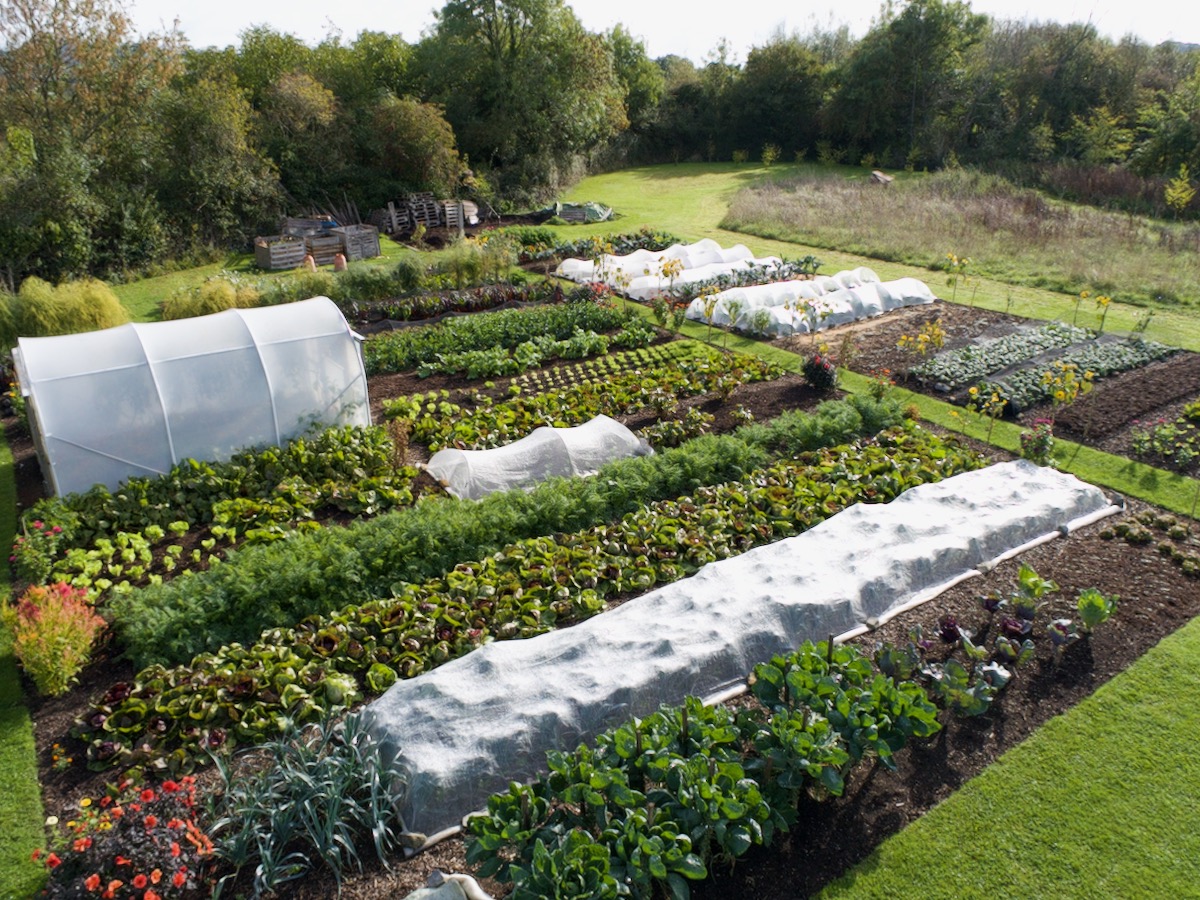
After summer harvests, replant and resow
Photo above is carrots sown after peas, with bird netting over to prevent Minty the cat doing her business. To the right are French beans sown direct after cabbage.
See my mid-July video tour of Homeacres garden.
There are nice opportunities for sowing. In particular this week until Friday. The waxing moon gives strong energy to sowings until around two days before full moon*, which is Sunday 21st July.
Sowing on the waning moon also gives good results, not quite so vigorous, and both phases work for eventual root and leaf harvests, in my experience.
The most important timing is seasonal.Sow now:
Lettuce, endive, very last chance to sow carrots, bulb or Florence fennel, kohlrabi
Late July, Chinese cabbage, winter radish, and turnips in cooler areas.
Early August spinach, salad rocket, mizuna, pak choi and other oriental vegetables.
These dates will be later if you are in extreme heat, or earlier for cool regions.
*Timing based on 10 years' trials by Lili Kolisko in the 1930s. She was a scientist and looked at food linking to health.

Potting compost, mix

I am trialling five different composts in large pots of the same pepper variety, sown early March and transplanted early May. The results show a lot of variation!
I'm disappointed in the Moorland Gold of 2024, they must have changed the mix.
And we made the thirds mix with coir and perlite just to see, because it's often recommended as a mix for beds in square foot gardening. I certainly don't see the point of those additions. Pure compost works best.
Leek planting

Leek plants above had been in 7 cm, 3 in pots, from a sowing 9th April in CD module trays, four seeds per cell. When planting, I use a trowel to make a precise shaped hole for each leek-clump rootball, and copper trowels make this easier. They are expensive, and worth it over many years of use.
The clumps needed a good watering, even though it had rained 75mm, 3 inches in the three preceding days. The potatoes had sucked out a lot of moisture.
These leeks are Jolant, a fast-growing variety for harvesting in early autumn. To save on covering them with mesh, I'm seeing whether the rapid growth in late summer will enable a worthwhile harvest before Allium leaf miner arrives, I guess in early autumn. See below for more on covers.
Potato trial

The above potato harvest was 12th July, Charlotte from homesaved seed potatoes. I have grown them in the same ground for 10 consecutive years, find more details of the trial here.
A few on social media claim that this does not count as a trial of no rotation, because 'I'm adding new compost every year'.
Well, adding compost is traditional good gardening, whether or not you are no dig. The point is rather how potatoes and all plants root deeply into the soil below every year, not just in the surface compost.
The 2024 harvest in the three beds was 52.5 kg 116 lb from 10.5 m² which includes pathways, compared to a 44 kg average harvest over the previous nine years. The rains of May helped a lot, plus there was no late frost. The potatoes are healthy and clean.
I don't claim that 'rotation is bad", but want to see how far I can go without it, and how necessary it is in this garden (not farm) context.. Results so far are kind of liberating.
Likewise in the trial beds below, I practice no rotation.
Dig, no dig trial

Peas just finished, and apart from onions, they were the final harvest from spring plantings. The photo shows new plantings, which I list from left to right.
Cucumbers after cabbage, beetroot after beetroot, chicory after fennel, kale after onions, celeriac after lettuce, leeks after potatoes, lettuce after carrots, and French beans after celery.
Both beds receive the same amount of compost, while plantings and harvests are on the same days for each bed. Details on this page.
Onion harvests

The timing of when you bend over the necks and harvest your onions, depends what they look like. Usually I wait until some of the stems have fallen down, and this is highly variable according to variety and weather.
Mine have suffered downy mildew after all the rain. It rots stems and has compromised growth. Plus I hope they will store well, but it's less certain.
Growth in polytunnel and greenhouse

The cold weather in June slowed growth and weakened plants. They are recovering, but late. Soon I shall pinch out the tops of tomatoes.

I don't feed tomatoes growing in soil. We applied 4cm or about 1.5 inches of compost in May, which included horse manure from the 2023 hotbed. This is year 12 of tomatoes in the same greenhouse soil. During winter I grow salad plants under cover.
It's not a good year for tomatoes in the UK! Harvests look like being small.
Covers on new plantings
Normally in summer I use mesh covers on new plantings for protection against insects, also sometimes rabbits. This summer, there have been so few insects that it's less vital, but still worthwhile, for protection against wind and to give some warmth.
Never in July have I used fleece, but this year, the sun is so weak and temperatures so low that it's been useful, until today 17th and for three subsequent days. For the cabbage above, I did not use any hoops, it's just sitting on top of them.
Mesh is heavier and I use hoops normally.

Get Charles's advice in his free newsletter
& 10% off your first order in our shop




